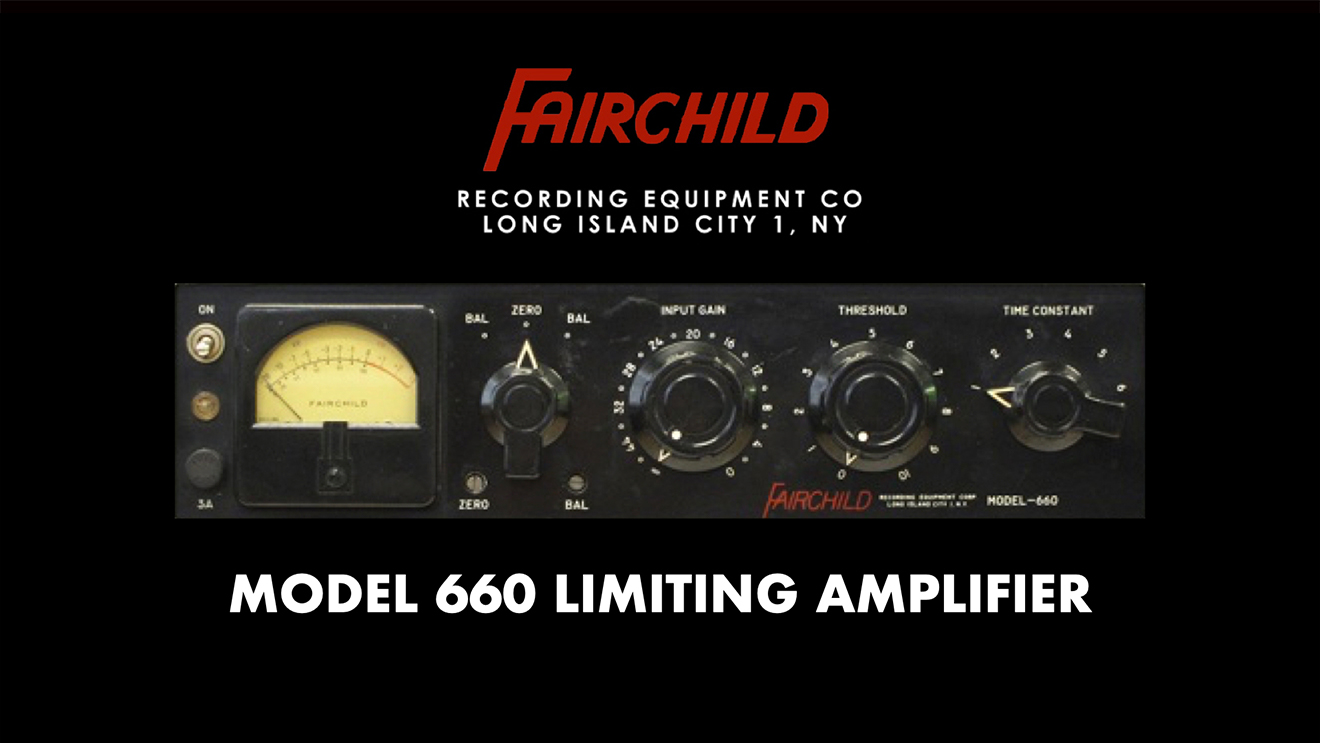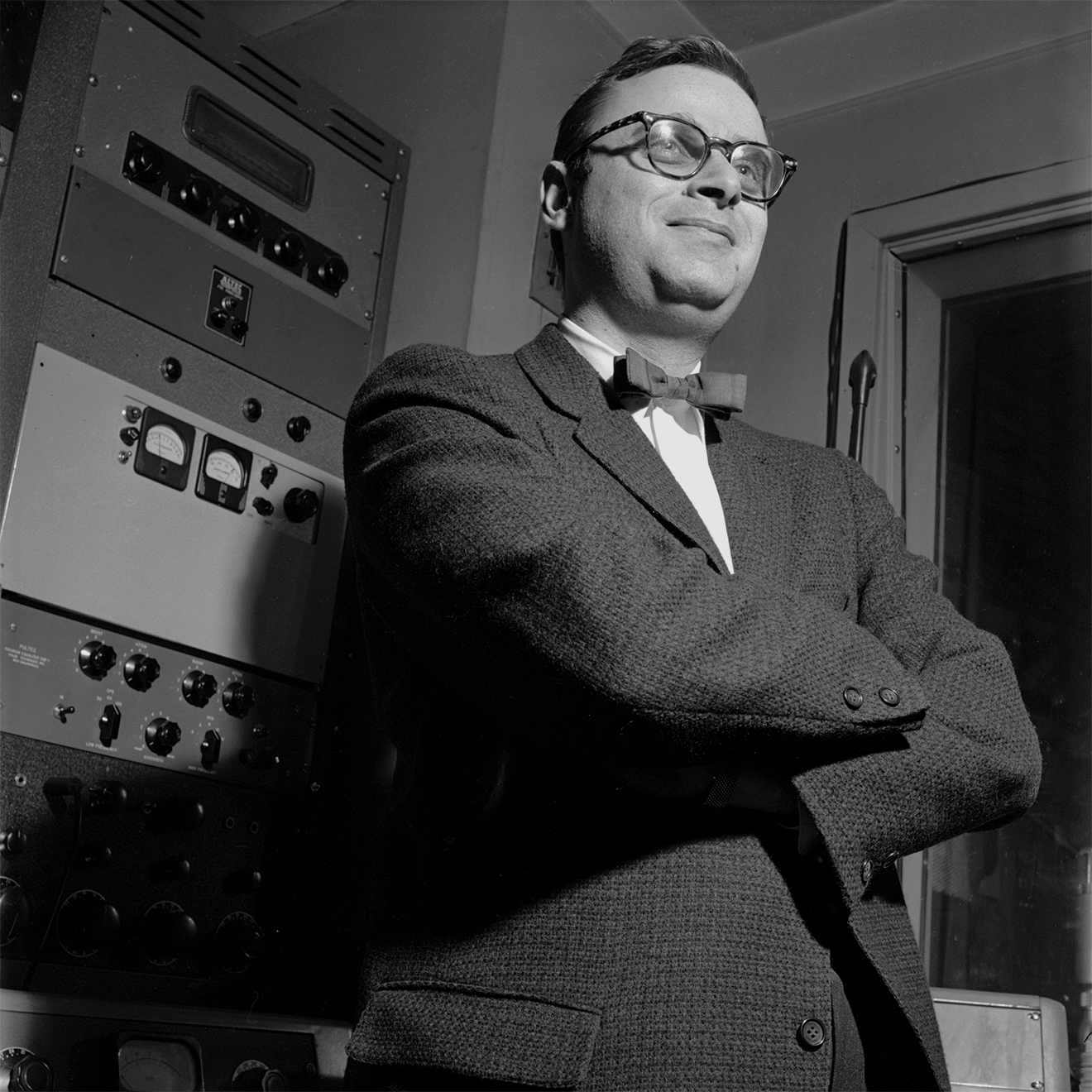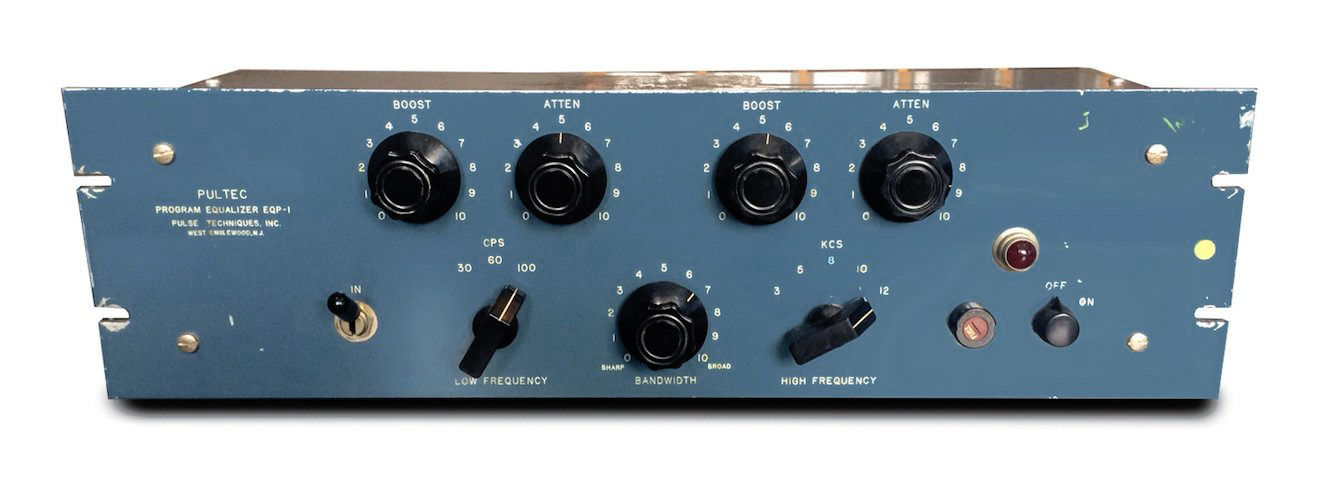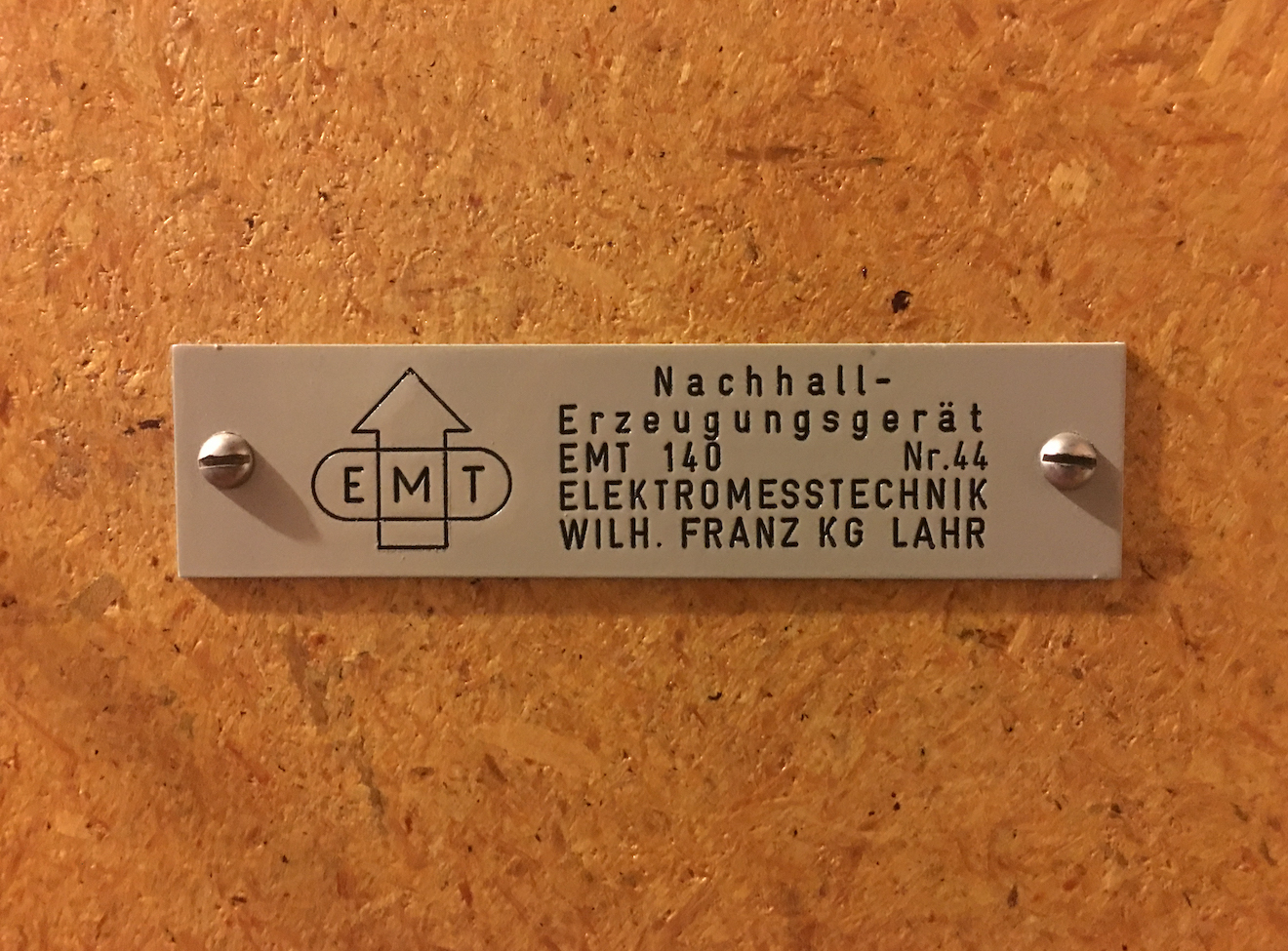| < Back | Mastering | Monitors | Next > |
| Mastering < Back |
Monitors Next > |
Fairchild 660 Limiting Amplifier
By 1956, Rein Narma was working for the Fairchild Recording Equipment Corporation, and one of his first tasks was to design a new limiting amplifier (Joel, 2002). The Fairchild 660 was introduced later that year and would go down in history as one of the most important and iconic pieces of gear to shape the sound of recorded music. A decade after it was introduced, The Beatles would unearth its power to make sounds punchier and more aggressive on their records (Bieger, 2002). Van Gelder was first in line for the 660, purchasing serial number 1 (Joel, 2002; Jenrick, 2005).
Pultec EQP-1 Parametric Equalizer
Van Gelder also added the Pultec EQP-1 parametric equalizer to his rig in 1956, seen behind him in the photo below.
EMT 140 Plate Reverb
In early 1957, the field of artificial reverb advanced light years overnight with the introduction of the EMT Model 140 plate reverb. Created by Walter Kuhl in the Black Forest of Germany, Van Gelder acquired serial number 44 immediately, and his mixes instantly improved leaps and bounds.
In Hackensack, Van Gelder kept the plate in the bedroom adjacent to the control room (Sickler et al., 2011). Then in 1962, after his move to Englewood Cliffs, Van Gelder added a second EMT 140 plate, serial number 410. Both plates were originally mono and have since been modified for stereo.
Serial number 44 has a one-of-a-kind sound. This was confirmed by Wilhelm Franz, founder of EMT, in correspondence between Franz and Van Gelder dated April 9, 1962. Upon purchasing his second plate, Van Gelder expected a unit that sounded similar to the first, but was surprised to find that it sounded quite different. Preferring the sound of his original plate, he reached out to Franz to see if EMT could swap the new plate for one that more closely mirrored the sound of the first. After an exchange of tape recordings provided to Franz by Van Gelder, Franz explained that his engineering staff was in unanimous agreement: Van Gelder’s first plate not only sounded different, it sounded different than all one-thousand-something models they had manufactured since. Franz agreed to replace Van Gelder’s new device, though he was doubtful that it would reproduce the sound of the first. Van Gelder decided to keep the new unit and both plates remain in his studio today.
| < Back | Mastering | Monitors | Next > |
| Mastering < Back |
Monitors Next > |





